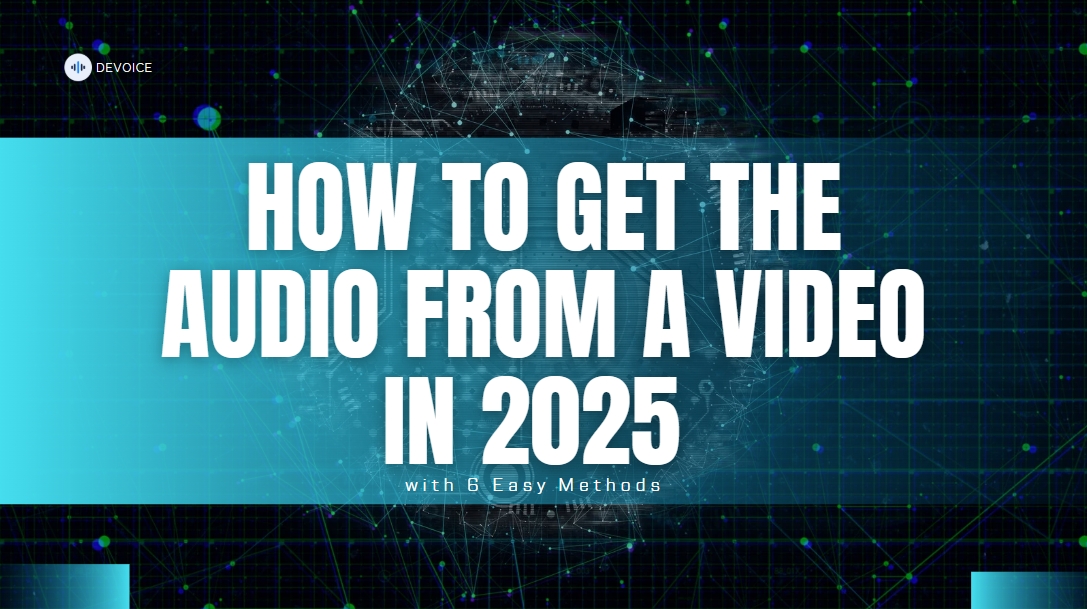How to Get the Audio from a Video in 2025 with 6 Easy Methods
Extracting sound from a video can feel tricky, but once you know how to get the audio from a video, it becomes second nature. Whether you want to repurpose a speech for a podcast, grab the soundtrack for editing, or simply get audio from video to listen on the go, today’s tools make it straightforward. In this guide, I’ll share six methods I’ve tested myself, covering browser-based tools, mobile solutions, and desktop apps, so you can separate audio from video quickly and with great quality.
Table of content
Why You Might Need to Get Audio from a Video
Last month, I faced a challenge: I needed to get audio from video clips of a conference panel for my upcoming podcast episode. I didn’t want to buy expensive software or wrestle with complex settings. That quest led me to explore how to get the audio from a video using six distinct approaches—from the AI-powered DeVoice online extractor to trusty desktop players like QuickTime and VLC. By the end, you’ll know exactly how to extract audio, compare each method’s pros and cons, and pick the one that fits your workflow.
Throughout this post, I’ll repeat how to get the audio from a video naturally—after all, that’s the core of what we’re doing! And I’ll also sprinkle in get audio from video and separate audio from video so you can see how they fit in real instructions.
Method 1: Use DeVoice – The Fastest Way to Extract Audio Online
What Is DeVoice?
DeVoice is a free, cloud-based service built to extract audio from video lightning fast. It uses AI to preserve clarity, making it my go-to for most projects where I need to know exactly how to get the audio from a video without fuss.
Step-by-Step Guide
Open DeVoice
Navigate to DeVoice in any modern browser.
Upload Your Video
Click “Choose File” and select your clip. DeVoice supports MP4, MOV, AVI, MKV, and more.
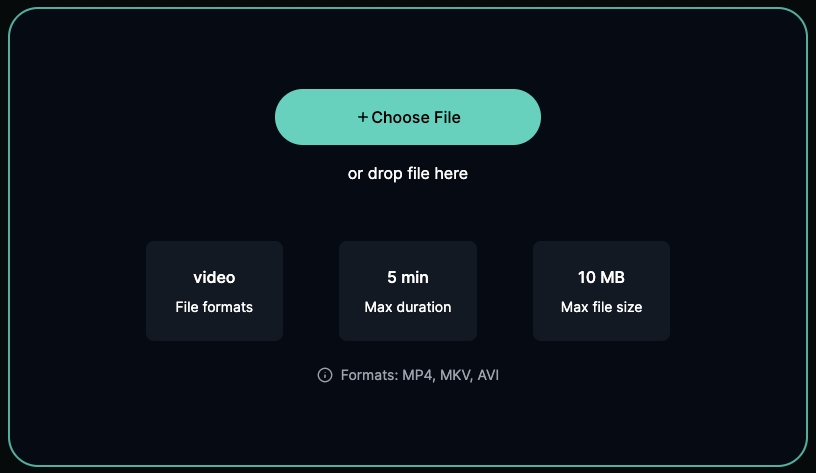
Wait for Processing
You just need to wait a few seconds on the site, and our AI will handle the audio extraction for you automatically.

Select & Download
Select and click “Download” to save your new audio file.
I rely on this method any time I need to learn how to get the audio from a video quickly and for free.
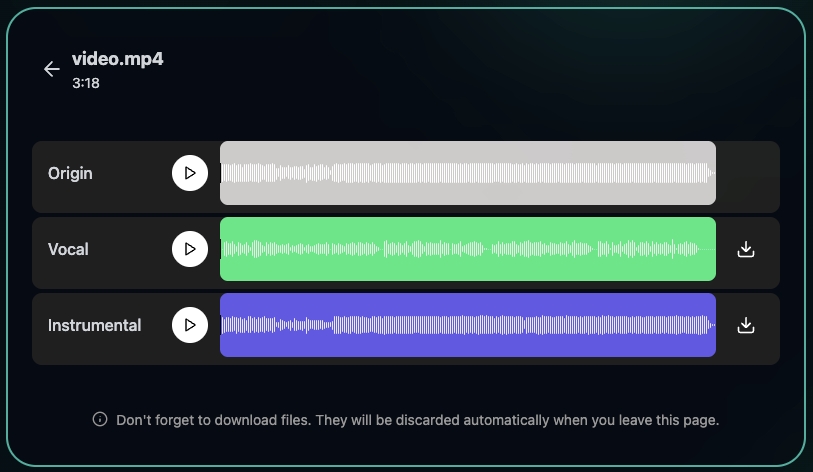
Pros & Cons
- Pros: Browser-based (no install), simple UI, excellent quality for most uses.
- Cons: Requires internet; free tier caps at 10 minutes of processing per day.
Need clean audio fast? Upload your video and let DeVoice do the rest!
Method 2: Get Audio from Video on Mobile – iOS & Android
When I’m out and about, I often need to get audio from video recorded on my phone. Luckily, DeVoice works perfectly on mobile browsers, letting you separate audio from video without installing anything.
Why It Rocks for Mobile
No app means no storage drain, and you can still follow the same extraction steps as on desktop. Learning how to get the audio from a video on your phone takes just a minute.
Step-by-Step Guide
Launch Your Mobile Browser
Open Safari (iOS) or Chrome (Android) and type in DeVoice.
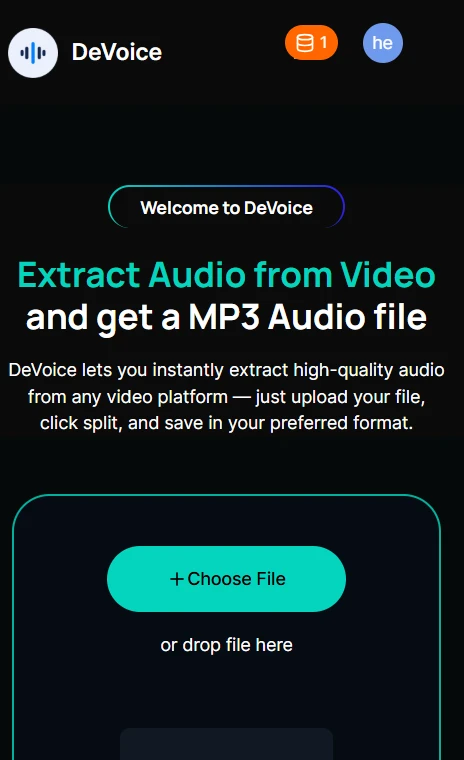
Choose Your Video
Select the clip you want to get audio from video.
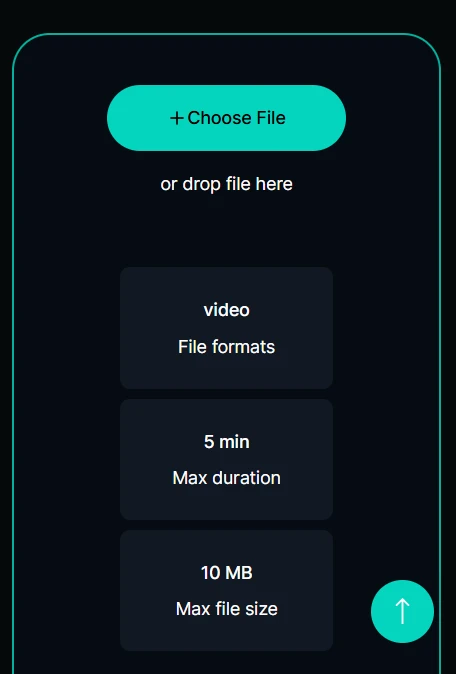
Wait for Processing
You just need to wait a few seconds on the site, and our AI will handle the audio extraction for you automatically.
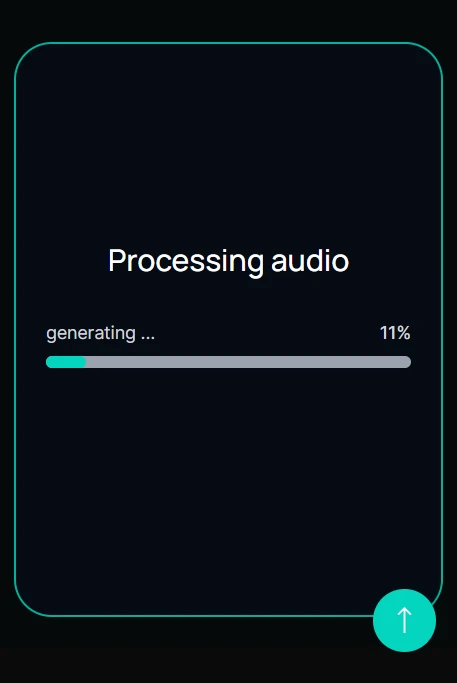
Select & Download
Select and click “Download” to save your new audio file. Save it locally or export directly to Dropbox, Google Drive, or iCloud.
A quick tip: use Wi-Fi to speed up uploads and avoid data overages. That way, you can focus on mastering how to get the audio from a video wherever you are.
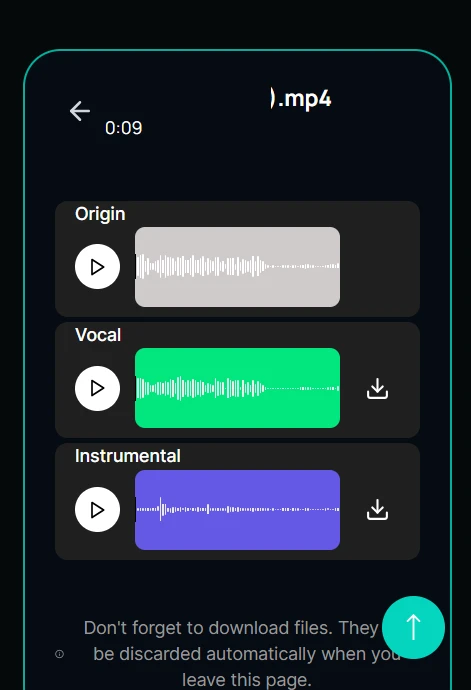
Pros & Cons
- Pros: Works on any smartphone, no installation, cloud-integration.
- Cons: Dependent on mobile data/Wi-Fi speeds; same daily limits as desktop.
Method 3: Separate Audio from Video on Mac with QuickTime Player
For offline use, QuickTime Player on macOS offers a built-in way to separate audio from video without any extra downloads. It’s the classic Mac approach to get audio from video at zero cost.
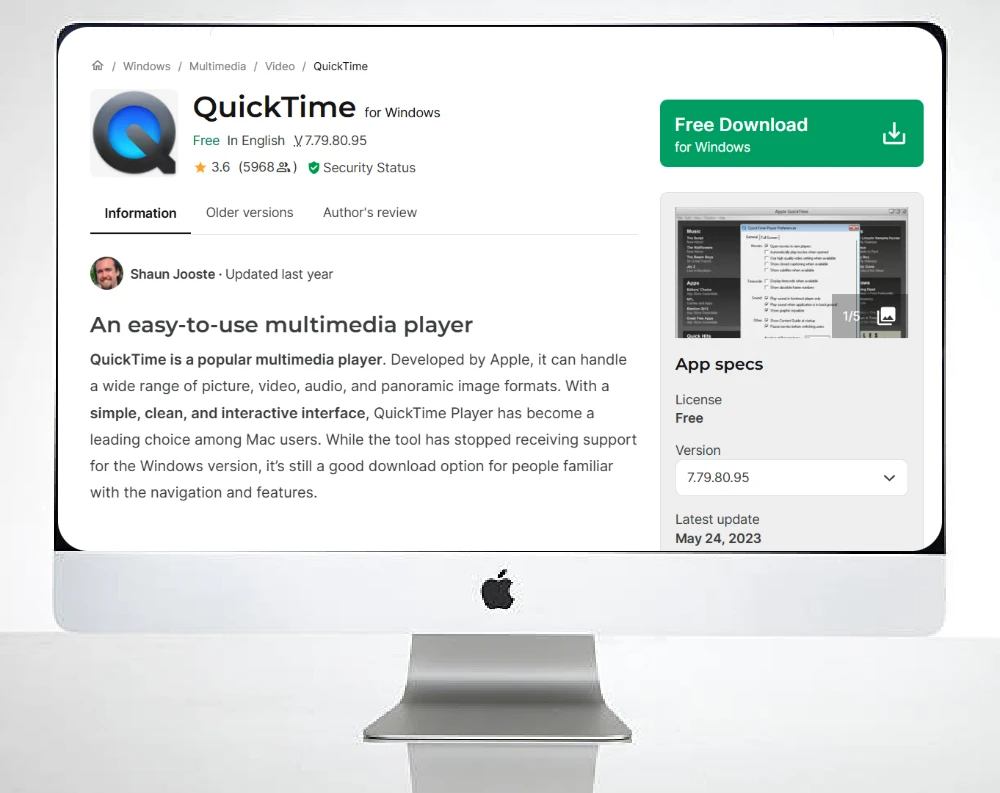
QuickTime’s Hidden Export Feature
Most people use QuickTime just to play files, but it can also export audio tracks directly. Once you know how to get the audio from a video here, you’ll never forget.
Step-by-Step Guide
Open Your Video in QuickTime
Right-click the file, choose “Open With → QuickTime Player.”
Export Audio Only
Go to File → Export As → Audio Only.
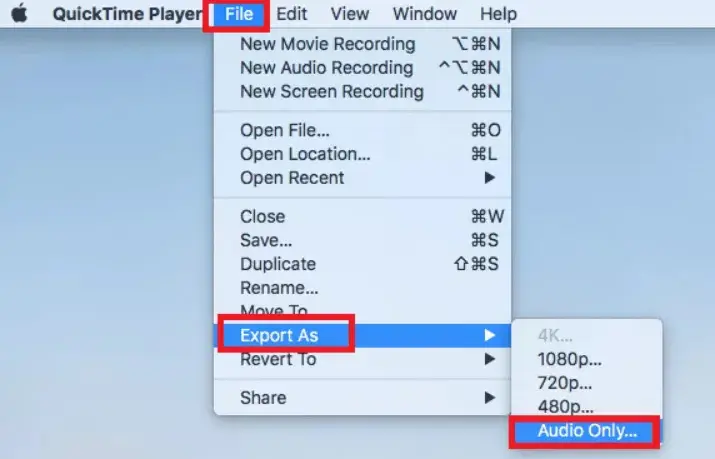
Save
Name and choose the destination; QuickTime outputs an M4A file.
I use this whenever I’m on my Mac and need to quickly separate audio from video without internet.
Pros & Cons
- Pros: Completely offline, no additional software, instant (for short clips).
- Cons: Limited output formats (M4A only), slower on long files.
Method 4: Separate Audio from Video with VLC Media Player
VLC Media Player is a free, open-source powerhouse that can convert video to audio on Windows, macOS, and Linux. Learning how to get the audio from a video with VLC unlocks advanced codec control.
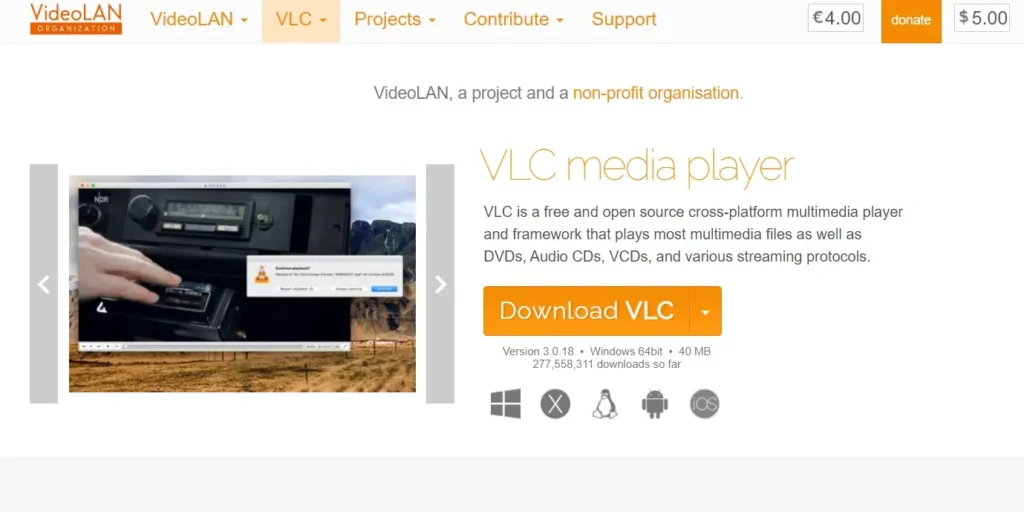
Why VLC?
It handles nearly every file type, and you can fine-tune bitrate, sample rate, and channels to your liking. Perfect if you need to separate audio from video for professional projects.
Step-by-Step Guide
Open VLC → Media → Convert/Save
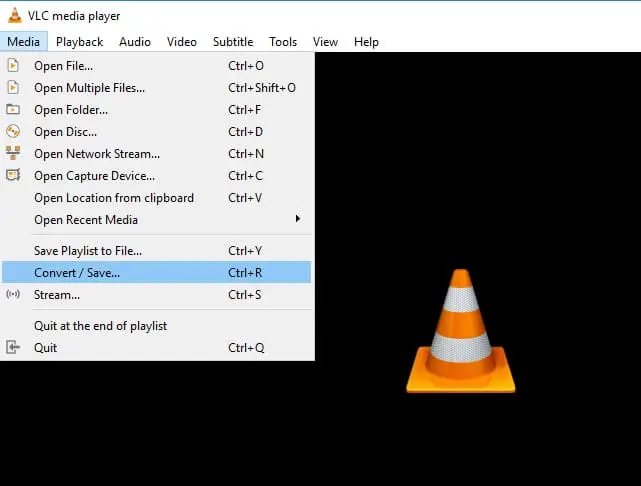
Add Your Video
Click “Add,” pick your file, then click “Convert/Save.”
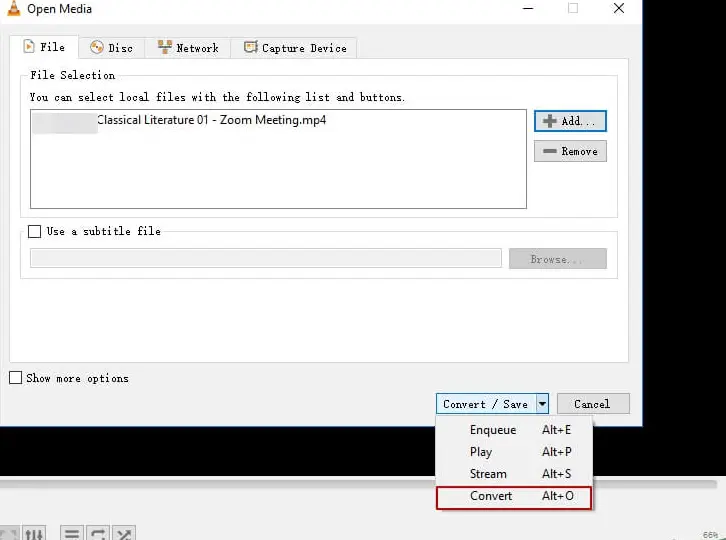
Choose Audio Profile
Select Audio – MP3 (or create a WAV/FLAC profile).
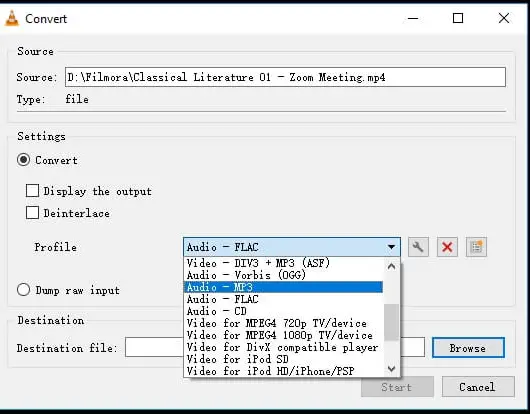
Destination & Start
Set the output location, then “Start.” VLC will process and extract audio from video.
For podcasts, I bump the bitrate to 320 kbps. For voice-only tracks, 128 kbps is plenty. Mastering how to get the audio from a video in VLC gives you full control.
Pros & Cons
- Pros: Free, cross-platform, highly customizable.
- Cons: UI isn’t the friendliest; conversion can take time.
Method 5: Use CapCut to Export Only Audio
CapCut, a popular video editor, also excels at letting you get audio from video through its detach feature. If you already edit in CapCut, this is a seamless way to separate audio from video.
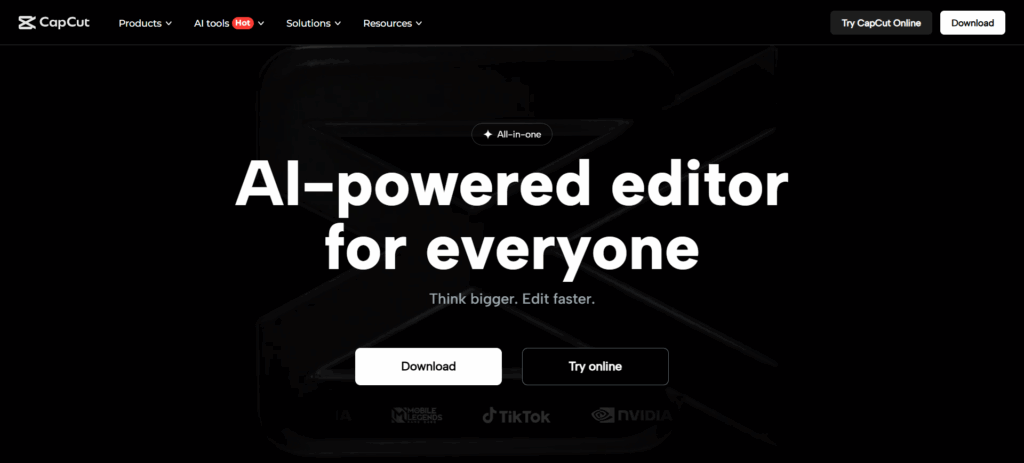
CapCut’s Audio Detach Trick
Available on both desktop and mobile, CapCut lets you pull out an audio track in just a few taps or clicks.
Step-by-Step Guide
Open CapCut & Start New Project
Import Your Video into the timeline.
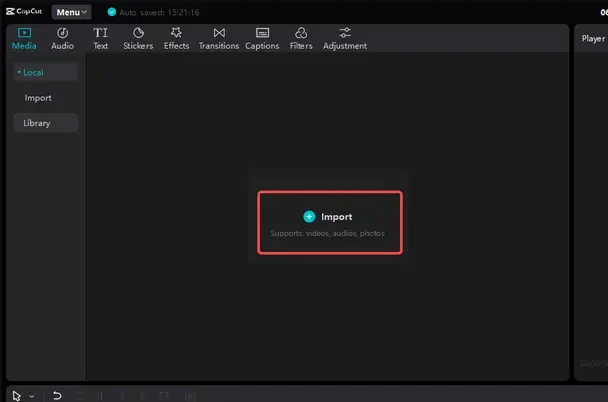
Detach Audio
Right-click (desktop) or long-press (mobile) the clip, select “Detach Audio.”
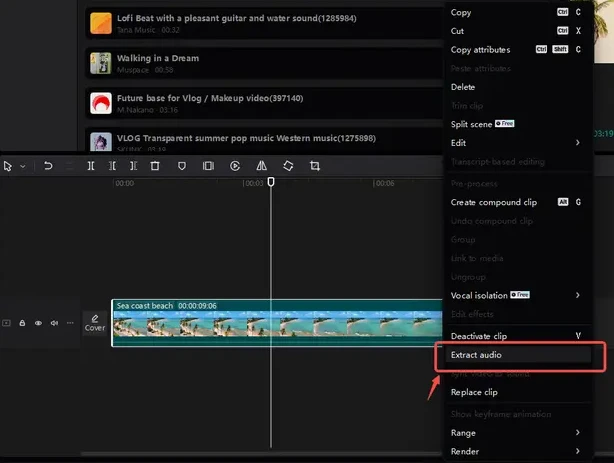
Export Audio Only
Remove the video track, then choose Export → Audio.
A pro tip: trim background noise or silence right in CapCut before export. This pre-cleanup makes your final audio cleaner and shows you exactly how to get the audio from a video that’s editing-ready.
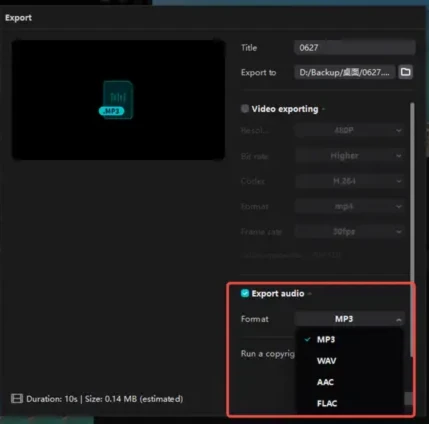
Pros & Cons
- Pros: Integrated editing, great for short projects, mobile + desktop.
- Cons: Larger installation; limited to MP3/AAC output.
Method 6: Use Biteable to Extract Audio from Video for Free
Overview: Biteable is widely known for creating animated and promotional videos, but it can also help you get audio from video for free. If you prefer an online solution without downloading software, Biteable is a simple and accessible tool for light audio extraction tasks.

Steps to use Biteable:
- Go to Biteable and create a free account.
- Click on “Create new video” and upload your video file.
- Drag the video into the timeline—no editing needed.
- Export the video by selecting MP4 format.
- Use an online converter like DeVoice or Online Audio Converter to convert the MP4 into an MP3 audio file.
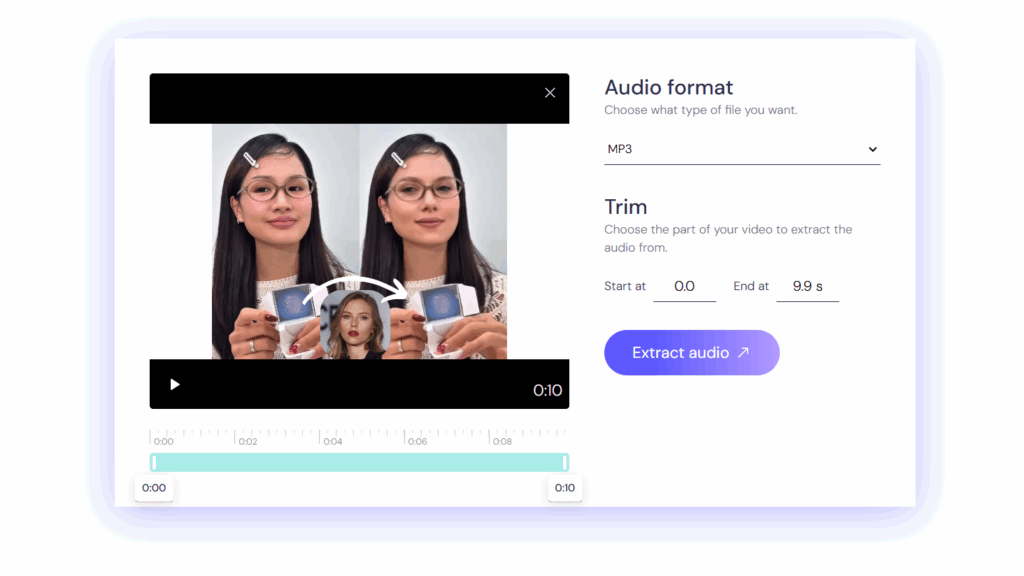
If you’re already using Biteable for video creation, extracting audio is a quick add-on task. For faster audio-only results, pair it with DeVoice’s dedicated audio extract from video feature.
Pros & Cons
- Pros: 100% online, no installation needed Clean interface and beginner-friendly Supports various video formats
- Cons: Ads
Slightly slower export times Advanced features locked behind a paid plan
Which Method Is Best for You?
Knowing how to get the audio from a video is one thing; picking the best tool is another. Below is a quick comparison to help you decide.
| Method | Platform | Cost | Quality | Ease |
| DeVoice Online | Web | Free/Paid | Excellent | Very Easy |
| DeVoice Mobile | iOS/Android browser | Free/Paid | Excellent | Very Easy |
| QuickTime Player | macOS | Free | Good | Extremely Easy |
| VLC Media Player | Win/Mac/Linux | Free | Very Good | Moderate |
| CapCut | Desktop/Mobile | Free | Good–Very Good | Easy |
| Restream Studio | Web (streamers) | Free/Paid | Good | Easy |
Recommendations by User Type
- Casual Posters: QuickTime or DeVoice Mobile is perfect for quick social clips when you need to get audio from video in seconds.
- Podcasters & Musicians: DeVoice Online or VLC, since they offer the best fidelity for music and voice.
- Mobile-First Creators: DeVoice Mobile or CapCut ensures you can separate audio from video right on your phone.
- Power Editors: VLC for deep customization, or CapCut if you need editing features alongside extraction.
My personal favorite day-to-day is DeVoice Online: it shows how to get the audio from a video without unnecessary steps.
How to Get the Audio from a Video – Common Questions
- What’s the fastest way to get the audio from a video?
- QuickTime Player or DeVoice Online can extract short clips in under a minute.
- Can I extract audio without losing quality?
- Yes—choose WAV output on DeVoice or a high-bitrate profile in VLC to preserve full fidelity.
- Is there a file size limit on DeVoice?
- Free tier allows up to 10 minutes of audio extraction per day; paid plans remove this cap.
- Do I need to install software to separate audio from video?
- No—DeVoice and Restream let you get audio from video entirely in your browser.
- Which method works offline?
- QuickTime Player (macOS) and VLC Media Player both run offline once installed.
- How do I fix audio glitches after extraction?
- Use CapCut or any DAW to apply noise reduction and normalize levels for even volume.
Try DeVoice now and extract audio from your video in seconds!
Final Thoughts: Separate Audio from Video Like a Pro
By now, you know how to get the audio from a video using six distinct methods—no matter your device or budget. From the AI-powered simplicity of DeVoice to the offline reliability of QuickTime and VLC, each tool has its place. Personally, I start with DeVoice for most projects, switch to VLC for advanced tweaking, and keep QuickTime as my offline fallback. Whichever route you choose, you’ll be extracting clean audio in minutes. Try out these methods today and transform your videos into high-quality audio assets!
